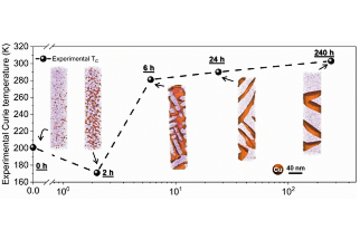All genres
941.
Other
Mini-symposium “Experimental Micromechanics and Nanomechanics” at the 10th European Solid Mechanics Conference (ESMC2018) (Organization). (2018)
942.
Other
Organizer of Mechanical Properties and Adhesion” 45th International Conference on Metallurgical Coatings & Thin Films (ICMCTF) 2018. (2018)
943.
Other
Organization of "Opening symposium for advanced (S)TEM and APT facilities at MPIE". (2018)
944.
Other
Organizer of Mechanical Properties and Adhesion” 44th International Conference on Metallurgical Coatings & Thin Films (ICMCTF) 2017. (2017)
945.
Other
Co-organizer of the Symposium - In situ Microscopy with Electrons, X-Rays and Scanning Probes in Materials Science at DPG Spring Meeting 2016. (2016)
946.
Other
Structure and dynamics V: Mechanical properties at small scales. (2014)
947.
Other
MACAN Meeting. (2014)
948.
Other
Topic coordinator for “Mechanical Characterization” (D2) at EUROMAT 2013. (2013)
949.
Other
Expected and unexpected plastic behavior at the micron scale: An in situ µLaue tensile study, Acta Materialia 60, pp. 1252 - 1258 (2012)
950.
Editorial
Nanomechanical testing in materials research and development III. Philosophical Magazine 92 (25-27), pp. 3125 - 3127 (2012)
951.
Preprint
High Strain Rate Compressive Deformation Behavior of Nickel Microparticles. arXiv (2024)
952.
Preprint
Thermal modification of ZrCu metallic glass nanolaminates: Structure and mechanical properties. arXiv (2024)
953.
Preprint
Nanoscale brittle-to-ductile transition of the C15 CaAl2 Laves phase. arXiv (2024)
954.
Preprint
Controlling Texture, Grain Size and Grain Boundary Type in Al films on (0001) α-Al2O3. papers.ssrn.com (2024)
955.
Preprint
Fabrication and extreme micromechanics of additive metal microarchitectures. ArXiv (2023)
956.
Preprint
Constructing phase diagrams for defects by correlated atomic-scale characterization. arXiv (2023)
957.
Preprint
Effect of Pore Formation on Redox-Driven Phase Transformation. arXiv (2022)
958.
Preprint
Chemical Partitioning at Crystalline Defects in PtAu as a Pathway to Stabilize Electrocatalysts. arXiv (2022)
959.
Preprint
Green laser powder bed fusion based fabrication and rate-dependent mechanical properties of copper lattices. arXiv (2022)











